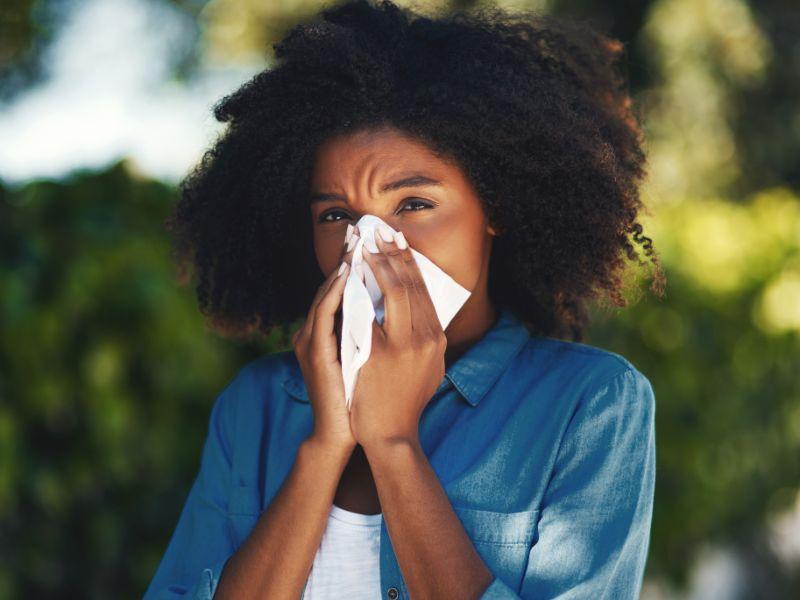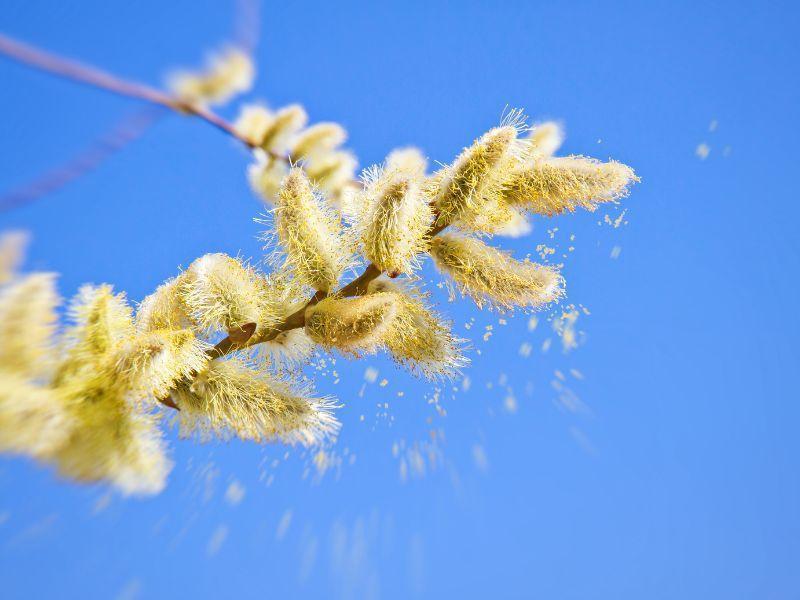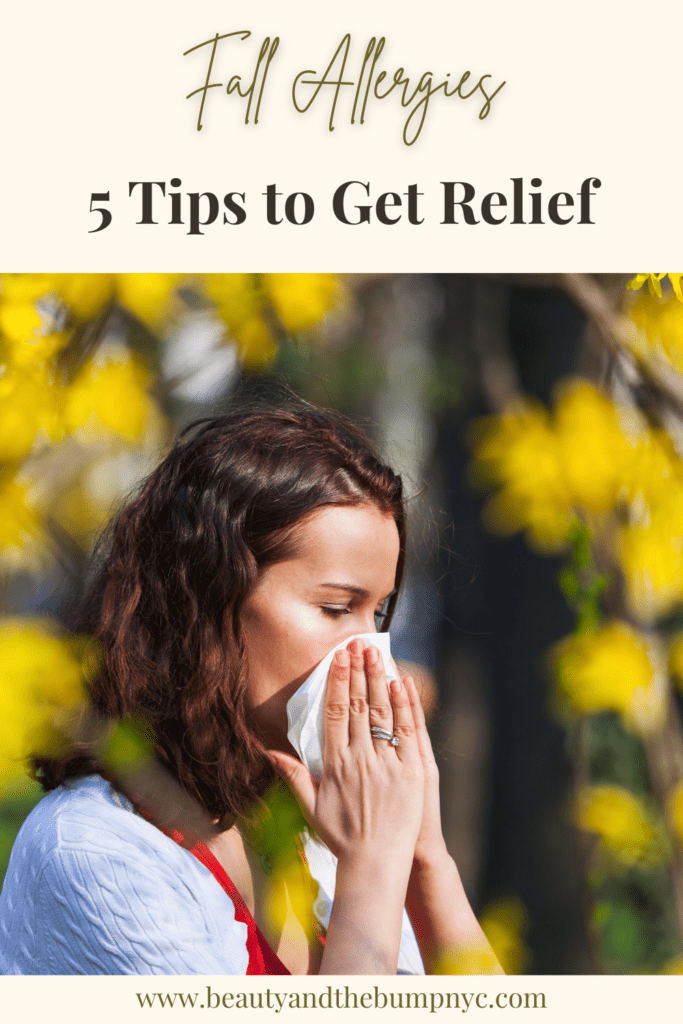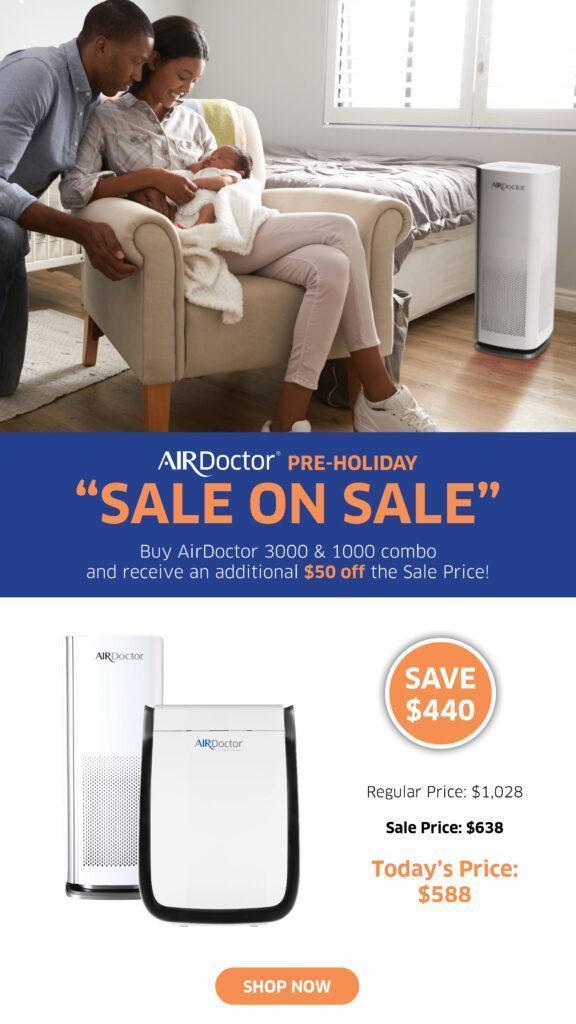Although I am a summer baby, I prefer all things fall like the cool breeze, beautiful foliage, and pumpkin spice! One thing I don’t look forward to is fall allergies. As a seasonal allergy sufferer, I can’t seem to get any relief no matter the season.

While most people associate allergies with springtime, fall is another peak allergy season. You’re probably wondering what exactly is causing your allergies to act up in the fall. Spring allergies are caused by tree pollen, and fall allergies are caused by weeds. Ragweed is the biggest culprit, along with mold and dust.
Fall Allergy Symptoms to Look Out For
How do you know if you’re suffering from fall allergies or a cold? The symptoms caused by fall allergies due to ragweed or tree pollen are:
- runny nose
- itchy eyes
- sneezing
- scratchy throat
- nasal congestion

How to Get Relief from Fall Allergies
1. Avoid ragweed and pollen
It’s estimated that 75% of people who are allergic to spring plants are also affected by ragweed. Pollen is the main culprit, and ragweed is the biggest producer of pollen in the fall. When the pollen count is high, avoid going outside as much as possible, especially in the morning and on dry, warmer days.
2. Clean your nasal passageways often
You can ease your allergy symptoms if you are consistent with cleaning your nasal passages. You can use a nasal irrigator like a neti pot or a Navage. I prefer the Navage since it isn’t manual. It works quickly and I get instant relief. You’ll be surprised at how much “gunk” comes out, too.
3. Eliminate mold
Mold can cause many illnesses, as well as trigger fall allergies. Indoor molds love damp areas. Areas like basements, bathrooms, laundry areas, and kitchens are among their favorite places. Always look for any leaks under sinks and around appliances and repair them. Get rid of any old, damp carpeting. Clean any mold you find on walls or inside cabinets, and after cleaning, be sure the surface is dried
Just like indoor mold, outdoor mold thrives in dampness as well. Outdoor molds grow in leaf piles, rotting logs, and compost heaps. Remove all dead vegetation from around the perimeter of your house and make sure that water from rain gutters can run away from your foundation. When you are outside doing fall cleanup, make sure to wear a mask. Also, remove clean off and remove your shoes before entering your home, and shower.
4. Keep up with cleaning
Cleanliness inside your house is important to preventing allergy symptoms. Vacuuming, wiping down surfaces, and dusting regularly makes a big difference.
Related: Holiday Cleaning Tips and Free Printable Cleaning Checklist
Because vacuuming and cleaning can stir up dust particles, making them easier to inhale, you should consider wearing a mask while cleaning, as well as gloves.
In addition to dusting and vacuuming, minimizing the humidity in your home with a de-humidifier, washing bed linens frequently in hot water, using allergy-proof bedding covers, and filtering the air in your home are all ways to help reduce allergen exposure in your home.
5. Keep the air in your home clean
A good HEPA air purifier removes airborne dust, mold spores, and pollen. It can capture 99% of the tiny particles that trigger your allergies. Look for units tested by the Association of Home Appliance Manufacturers (AHAM) which lists the clean air delivery rate (CADR). Make sure the number is at least two-thirds of the room’s square feet.
Keep the windows closed and run your air purifier to remove allergens from the air, but make sure you change your filters regularly.
I recommend AirDoctor. AirDoctor is a powerful, professional quality air purifier that filters out all the bad stuff you don’t want to be breathing in. AirDoctor is different from other purifiers because it not only captures the smallest most dangerous particles like smoke, bacteria, and viruses, but it also captures toxic gases and VOCs (Volatile Organic Compounds)– some of the most common forms of indoor air pollution that can trigger fall allergies.
- AirDoctor’s UltraHEPA Filter has been independently tested to capture 100% of airborne particles at 0.003 microns in size—that’s 100 times more effective than HEPA
- AirDoctor also has a substantial activated Carbon VOC Filter that captures toxic gasses like formaldehyde, ozone, and off-gassing from your furniture.
- AirDoctor has also been tested by a third-party lab and proven to remove 99.99% of a range of tested bacteria and viruses, including H1N1. Now, AirDoctor doesn’t claim to remove SARS-2-CoV, but it is proven to remove surrogate viruses of a similar size.
- AirDoctor also has great features like a professional-grade Air Quality sensor and Auto mode setting that detects the air in the room and automatically adjusts the filtration levels. You can keep it on in Auto mode 24/7 to give you peace of mind knowing your air is as clean as possible around the clock.


